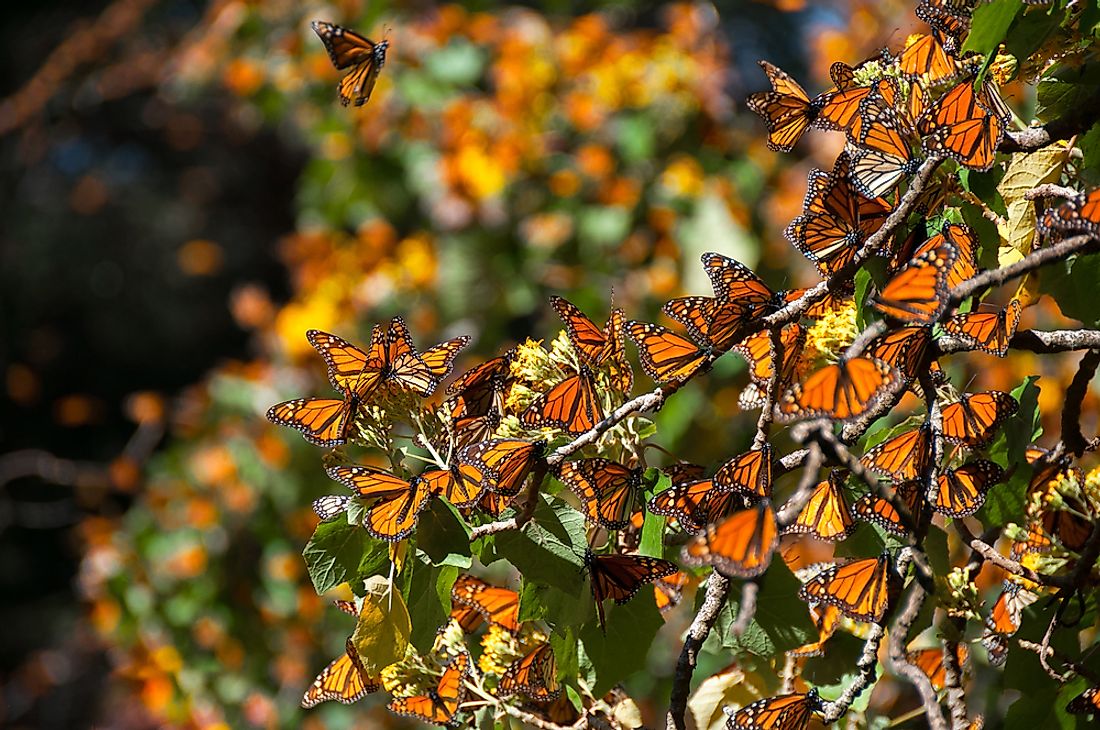The Monarch Butterfly Biosphere Reserve: A UNESCO World Heritage Site In Mexico

6. Location
The Monarch Butterfly Biosphere Reserve is located along the border between the Mexican states of Michoacan and the State of Mexico. This region of the country is part of the Trans-Mexican Volcanic Belt and is considered a pine-oak forest ecoregion. It covers an area of 138,379 acres and reaches altitudes of up to 8,858 feet above sea level.
5. History
This biosphere and its importance to migrating monarch butterflies were first discovered by researchers in 1975. By 1980, ex-President Portillo protected the area as a reserve under the presidential decree and a few years later, the Secretariat of Urban Development and Ecology was charged with managing the reserve. In 1986, its borders were officially defined and it was categorized as a special biosphere reserve. In 2006, the Monarch butterfly Biosphere Reserve was added to the list of UNESCO World Heritage Sites.
4. Flora Of The Reserve
As previously mentioned, this biosphere reserve is located within a pine-oak forest ecoregion. It experiences a temperate and moist climate with cool, semi-cold, and cold subclimates that occur throughout. This reserve has the ideal growing conditions for the following tree species: holm oak, oyamel fir, juniper, and cedar.
3. Fauna Of The Reserve
The most well-known animal species inhabiting this biosphere reserve is the monarch butterfly. Over a billion of these butterflies migrate to the area every winter and gather on the tree branches, causing them to bend under the immense weight. Researchers have determined that 14 colonies make their winter homes here, a number that represents more than half of the monarch butterfly colonies of Canada and the US.
Other animal species that can be found in the Monarch Butterfly Biosphere Reserve include: coyotes, grey foxes, white-tailed deer, crows, rabbits, horned owls, and hummingbirds.
2. Role Of The Reserve In Monarch Butterfly Conservation
This biosphere reserve is important both as a means to conserve the monarch butterfly and to protect the unique ecosystem here. Protecting areas along the migratory route of the monarch butterfly is considered critical to its survival. In fact, Canada, Mexico, and the US came together in 2008 to establish a plan for conserving this butterfly species and its migratory path.
Unfortunately, the monarch butterfly is threatened by a number of human activities including logging, habitat destruction, forest fires, unsustainable tourism, and ineffective coordination among government officials. By creating this biosphere reserve and recognizing its importance as a natural asset, governments and international bodies have taken an important step toward preserving the survival of the monarch butterfly.
Protecting this biosphere reserve is, however, challenging for the Mexican government. This challenge is because the land within the biosphere is actually owned by 38 ejidos (communal landowners), 16 private individuals, and 17 indigenous communities. Efforts to conserve the ecosystem and monarch butterfly habitat often conflict with the economic interests of these owners.
1. Things To See And Do
Tourists to the Monarch Butterfly Biosphere Reserve are able to observe two of the five monarch butterfly colonies that are located in Michoacan and two of the colonies located in the State of Mexico between November and March. Here, visitors are able to come within close proximity of the butterflies and observe how they gather among the trees. To reach these colonies, tourists can either hike on foot or go by horseback.











